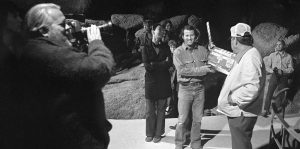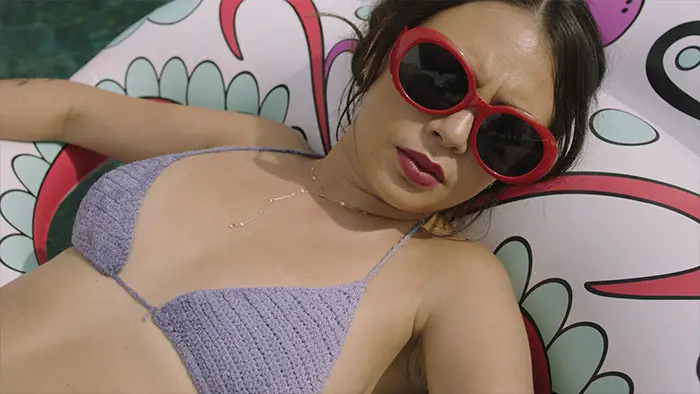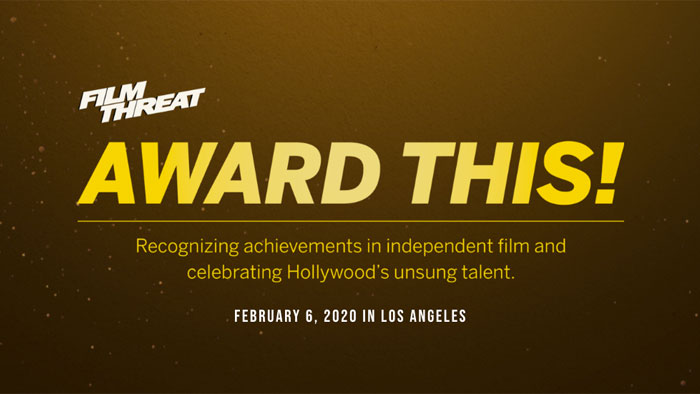
The Other Side of The Wind was Orson Welles’ last film, and for many years it was left unfinished. There were many attempts to revive the film, by Showtime, by Wes Anderson and Noah Baumbach, and one other time by Peter Bogdanovich. Peter Bogdanovich never really gave up on it, due to the fact that he promised Orson he would complete the film someday. It’s so good that he didn’t because Netflix, bless them one and all, finally revived this forgotten piece of cinematic treasure.
It’s somewhat difficult to explain this film, because it is so many things. It’s a parody, a biopic, a comedy, a tragedy, an experimental film, and God knows what else. It may sound crazy to say, but The Other Side of The Wind is quite possibly Orson Welles’ most ambitious picture and that might explain why it remained unfinished for so long.
It’s stars are royalty of Hollywood yesteryear, legends that people born after 1990 have no idea exist. For the sake of my own enjoyment I will list some of the bigger stars who appear in the film: Dennis Hopper, Claude Chabrol, Mercedes McCambridge, John Huston, Peter Bogdanovich, Gregory Sierra, Henry Jaglom, Cameron Crowe, Natalie Wood, Lilli Palmer, Oja Kodar, Susan Strasberg, Robert Random, etc, ad infinitum into perpetuity. It’s a testament to Welles’ genius that all of these people chose to be a part of this film.
The plot, though loose, can be summed up somewhat thusly, A famous director, Jake Hannaford (played by John Huston, but more than likely meant to be based on Welles) is having a birthday celebration at his home, and several members of the media are present, as it has been told that Hannaford’s new film will be screened there. Unbeknownst to a lot of the guests, the film is not finished, and most likely won’t be because the production is dead broke. We see scenes from the movie, which is titled…The Other Side of The Wind which is Welles’ send up of all the films coming out at the time, including Easy Rider, El Topo, and the French New Wave. The shooting style of the film within the film and the film itself could be summed up as an homage to a genre of film that Welles’ desperately wanted to be a part of, but was a little too late to the party.

“Unbeknownst to a lot of the guests, the film is not finished, and most likely won’t be because the production is dead broke.”
The character of Hannaford, though played by John Huston, is obviously based on Welles, although there are parts of the character’s personality that are 100% Huston. It’s so fascinating to see him in front of the camera rather than behind it. The same can be said about Peter Bogdanovich’s portrayal of Brooks Otterlake, who is undoubtedly based on the real life of Bogdanovich.
Bogdanovich was known as a student of classic films and befriended many famous directors of his youth, such as Welles and Huston, before he started directing. Bogdanovich is a good sport because the dialogue exchanged is not always flattering to him. The same can be said for almost anyone who’s featured in the film. Welles makes fun of any and everyone in this film, including himself.
Netflix really did a mitzvah for Welles’ and Bogdanovich with this deal and impeccable restoration. At times, the switch from black and white to color can be a little distracting, but mostly it goes with the frenetic French New Wave style camerawork. The dialogue and action are improvised to an extent, which may be unnerving to some people, though I found them rather invigorating. The film reminds me of two of my favorite films that are about making films, Beware of A Holy W***e by Rainer Werner Fassbender, and Symbiopsychotaxiplasm: Take One by William Greaves. I’ve seen other movies that go in this category but not as well as The Other Side of The Wind. The three films could almost go together as a trilogy on how unpredictable and gruelling film shoots, especially independent ones, can be.

“Netflix did a mitzvah for Welles’ and Bogdanovich with this deal and impeccable restoration…”
Before I wrap this up, there are a few wonderful lines in the film that made me laugh out loud and it’s even more wonderful when you consider a lot of the dialogue was improvised. In one scene, Brooks Otterlake is being interviewed by several journalists all at once. They refer to him as a disciple of Jake Hannaford’s to which he responds, “The man is infested with disciples, I’m an apostle (this could be a fitting description of Bogdanovich’s real life relationship to Welles)!”
In another scene, Jake Hannaford is referring to a certain man at the party as a cineaste to which Otterlake responds “He doesn’t know his cineaste from a hole in the ground!” There’s also the somewhat embarrassing reference that Billy Boyle (Norman Foster) makes to Bernardo Bertolucci calling him “one spicy meatball”, and the last one I’d like to mention is when a group of Hannaford’s “club” (read: sycophants) are talking s**t about actor/producer Max David (Geoffrey Land) and one of the men says “He’s so crooked he’s got rubber pockets to steal soup.”
There’s also plenty of outdated language that could be considered offensive and certainly politically incorrect by today’s standards, a lot of full frontal female nudity, and a hinting around of Hannaford going to Mexico with a high school girl when Hannaford is definitely way above the age of consent. This was a different era, we have to remember, and I for one don’t believe the film shouldn’t be saved for posterity for using humor and language that was acceptable at the time of its release. All of that being said, you should know what you’re in for if you choose to watch the film. I, for one didn’t regret seeing it by a longshot.

The Other Side of The Wind Directed by Orson Welles, Written by Orson Welles and Oja Kodar. Starring John Huston, Peter Bogdanovich, Robert Random, Oja Kodar, Susan Strasberg, Joseph McBride, Lilli Palmer, Edmond O’Brien, Mercedes McCambridge. The Other Side of The Wind screened at the 2018 New York Film Festival.
8 Out of 10 Stars



hi I just read this comment and I think you really did a great summation of the film, maybe better than mine, haha. xo-Lorry Kikta
I’ve seen the movie 2 & 1/2 times, watching the first hour in the wee small hours of the morn on November 2 before going to work, starting the film over when I got home, watching the associated doc “They’ll Love Me When I’m Dead”, then watching the “Wind” all over again the next day. As far as I’m concerned, this is a masterpiece that requires no apology, top-shelf stuff. Like all films by Orson Welles, this requires more than one viewing. Much like the work of Thomas Pynchon, the plot doesn’t really settle in until the re-reading/reviewing. And this movie resembles the work of Pynchon more than any other film I’ve seen, up to and including Paul Thomas Anderson’s film realization of “Inherent Vice”.
The mise-en scene of “The Other Side of the Wind” places the viewer in the time/place/absolute decadence where “Gravity’s Rainbow” was written, with the decrepit Jake Hannaford planning to haul some barely post-puberty young thing down to Mexico when the party’s over, spys with cameras everywhere and sex as power relations of dominance and submission from the front to the back of the movie. It’s as if Welles was also working from the Deleuze & Guattari Fakebook.
I suppose the one one line of dialog that Pynchon is now best known for is from his cameo on the Simpsons—”Thomas Pynchon loved this book, almost as much as he loves cameras!” This is the film where Welles notes how the camera is a weapon, where the camera is a spy, where the camera can and does destroy people, including those wielding the cameras. The final bit of dialog in “Wind”, a voice-over by the now dead Jake Hannaford in the final frames of Orson Welles’ final film, rhymes with so many things Pynchon, an uninhibited film buff, wrote about cameras as weapons—
“Who knows? Maybe you can stare too hard at something, huh? Drain out the virtues, suck out the living juice. You shoot to great places and the the pretty people, all those girls and boys.
Shoot ’em dead.”
Loved the movie and the doc – and the book about the making of the movie from a first-hand perspective.